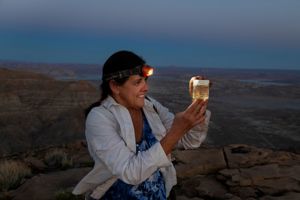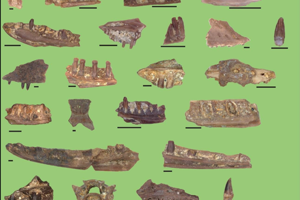CATALYST
DENVER MUSEUM OF NATURE & SCIENCE ONLINE MAGAZINE
How to See Migratory Birds at the Denver Museum of Nature & Science
Discover the Earth's Most Incredible Long-Distance Travelers — Without Leaving Colorado!
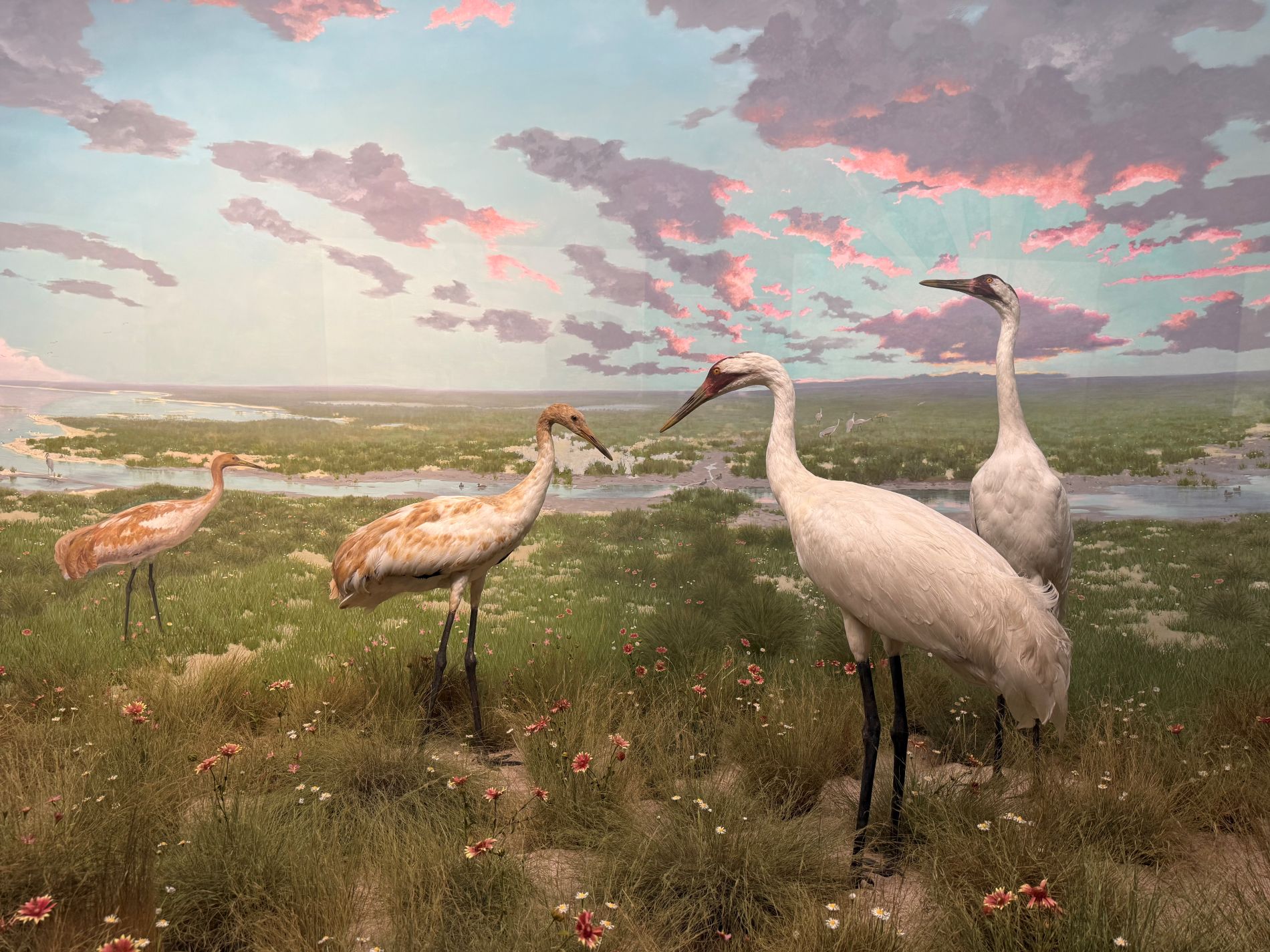
Migratory whooping cranes depicted in a diorama found in the Northern & Rare Birds exhibition on the Museum's third floor. (Photo/ Taran Volckhausen)
Look to the sky this spring and you may just be treated to a feathery spectacle. Millions of birds will take to the skies on an epic journey from their wintering refuges to summer breeding grounds. Guided by the moon and stars, internal clocks and even the Earth's magnetic field, migratory birds navigate over towering mountains, across blazing deserts and traverse a seemingly endless ocean, undertaking some of the boldest, most beautiful bids for survival found anywhere on the planet.
On May 10, we celebrate World Migratory Bird Day in honor of the incredible avian wildlife that inhabits and enriches our world’s ecosystems. As we celebrate, did you know that you can get up close to see and learn fascinating tidbits about several migratory bird species in our Wildlife Hall dioramas? As we mark World Migratory Bird Day, here's how you can see migratory birds on your next visit to the Denver Museum of Nature & Science.
Royal Albatrosses: OG Ocean Hang Gliders
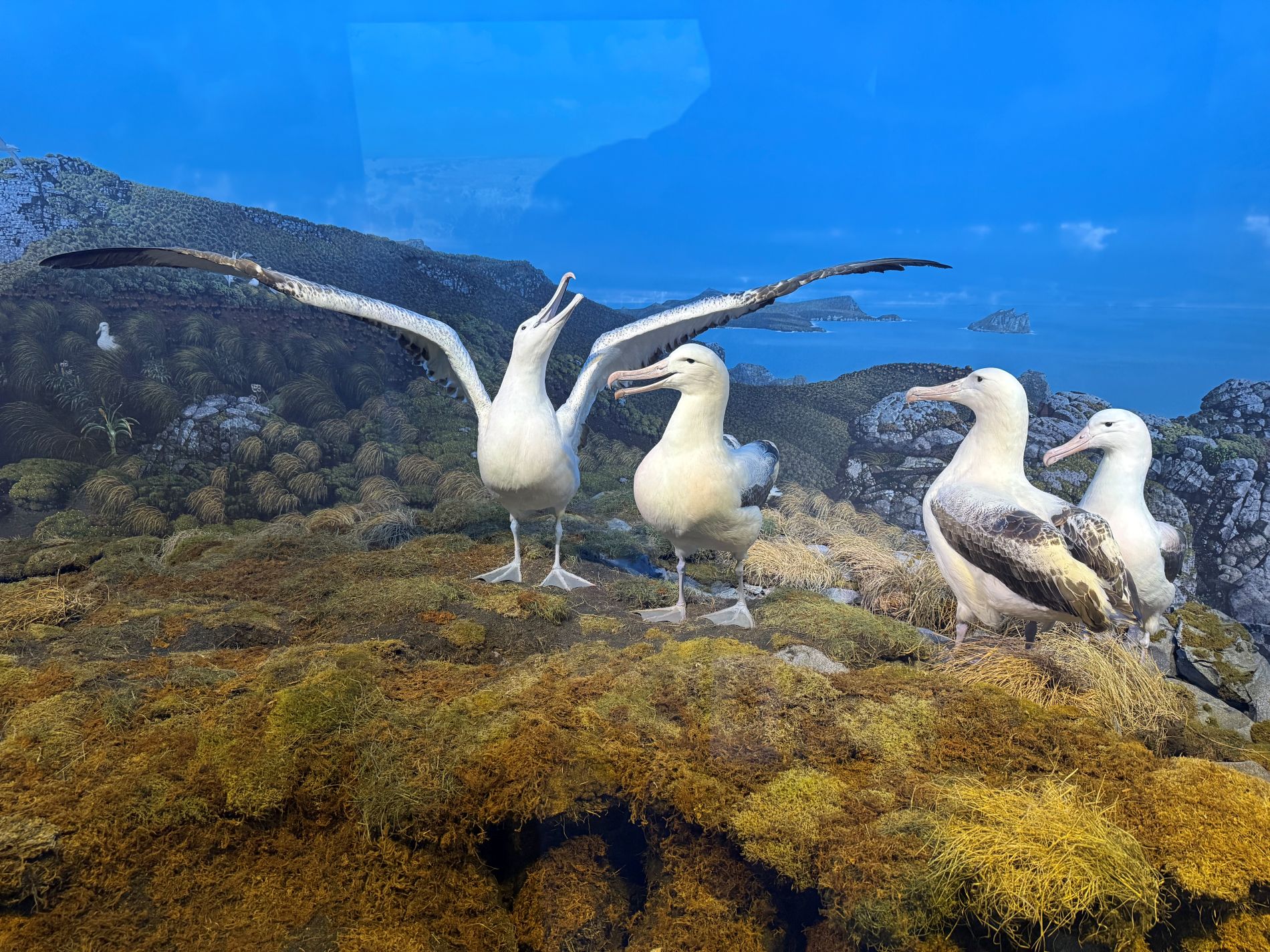
Southern royal albatrosses in the South Pacific Islands section of the Museum's Wildlife Halls on Level 2. (Photo/ Taran Volckhausen)
Albatrosses have long, slender wings but they don’t have good flying muscles. That means they don’t flap their wings much but rather soar for hours on updrafts over the ocean. A true ocean-faring bird, the albatross spends almost all its time at sea — either soaring in circular patterns like a hang glider or bobbing up and down on the waves when the winds are down. These massive birds can soar off to South American waters in search of food before returning to their breeding grounds near New Zealand.
The albatrosses at the Museum can be found in the South Pacific Islands section of the Wildlife Halls on Level 2. The diorama depicts the southern royal albatrosses when they ashore to breed once every two years at the remote Campbell Island, part of New Zealand's subantarctic islands.
Northern Gannets: Torpedo Divers
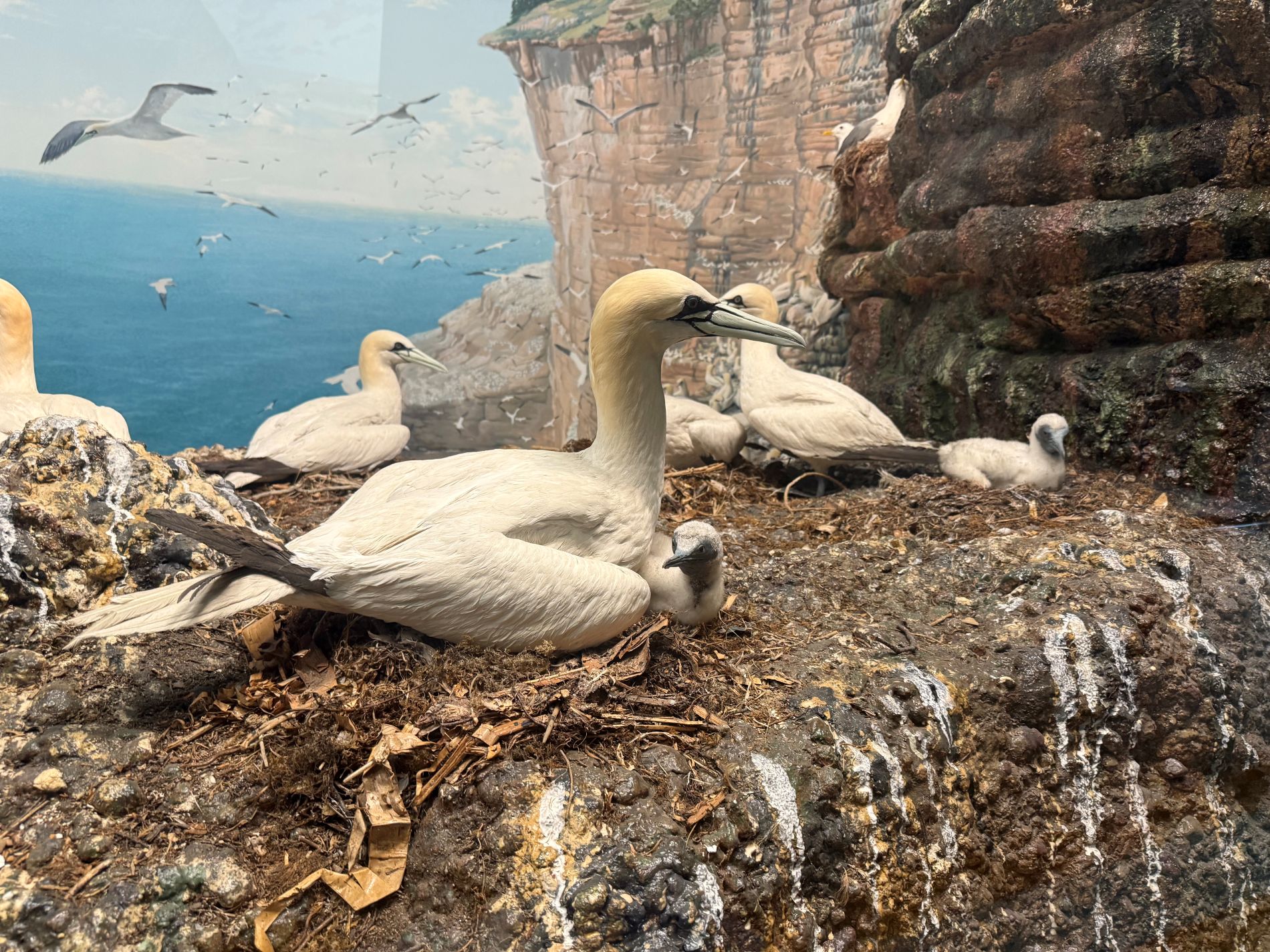
Northern gannets in the Northern & Rare Birds exhibition on Level 3. (Photo/ Taran Volckhausen)
Each spring, thousands of gannets migrate to the 400-foot cliffs of tiny Bonaventure Island, in southeast Quebec. These gregarious birds breed in dense colonies near the ocean to provide them with access to their primary food source: fish. Capable of flying hundreds of miles in search of a meal, when they spot a fish, they can dive from 100 feet up in the air, piercing the water at over 60 miles per hour!
At the Museum, you can spot the northern gannets in the Northern & Rare Birds exhibition on Level 3. The diorama depicts the cliffs of Bonaventure Island where gannets share nesting grounds with other species such as black-legged kittwake and Atlantic puffins.
Atlantic Puffins: Little Birds, Big Charm
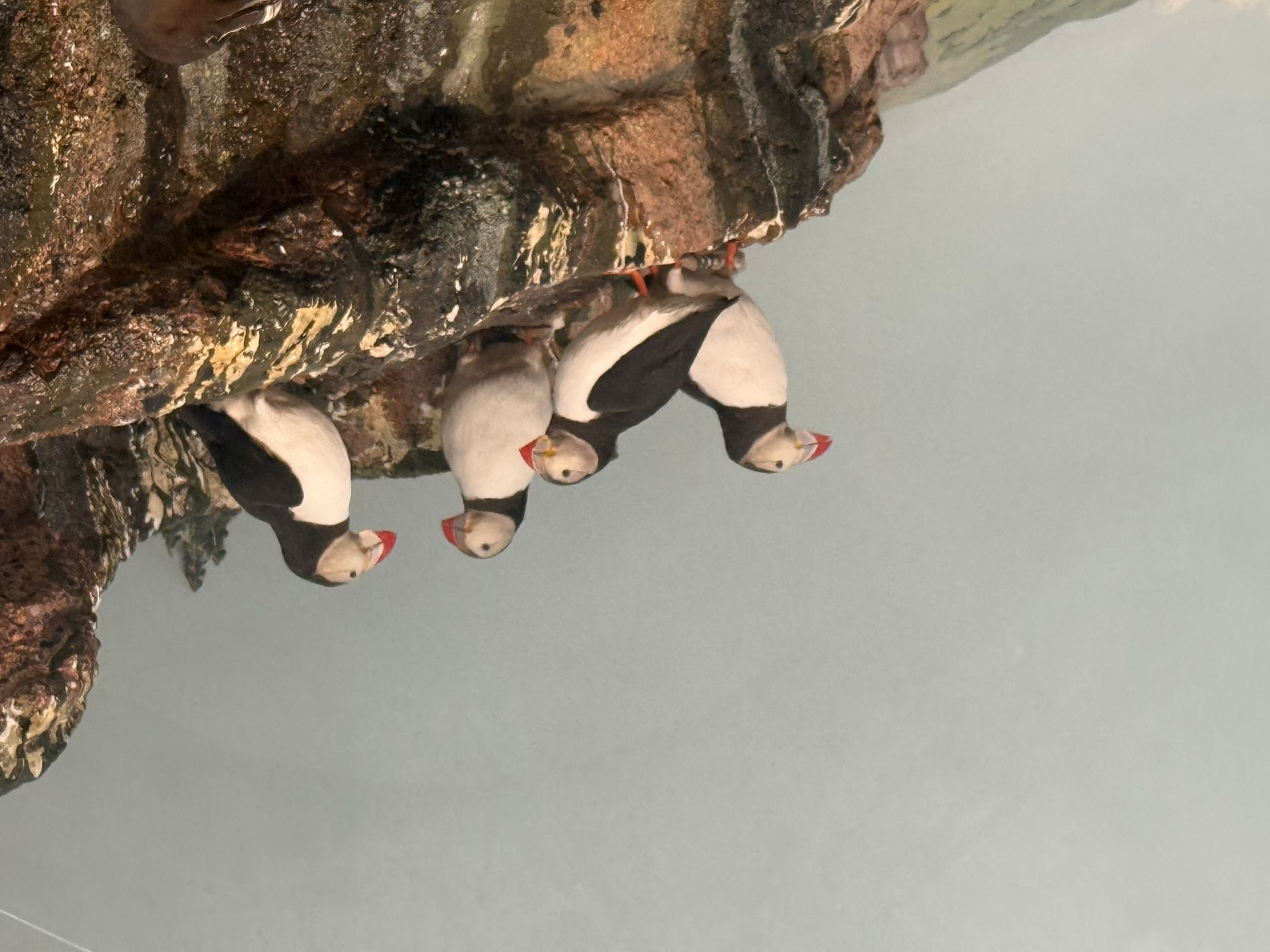
Atlantic puffins in the Northern & Rare Birds exhibition on Level 3. (Photo/ Taran Volckhausen)
With their colorful beaks and waddling walk, Atlantic puffins are often nicknamed “sea parrots.” These hardy seabirds spend most of their lives on the open ocean, surfing up and down waves and diving into the water to catch fish. In April and May, puffins migrate home often to the very place they hatched — sometimes even nesting beside their old burrow.
The Museum’s Atlantic puffins can be found in the Northern & Rare Birds exhibition on Level 3 alongside the northern gannets and other sea birds of Bonaventure Island.
Passenger Pigeons: A Presence Preserved
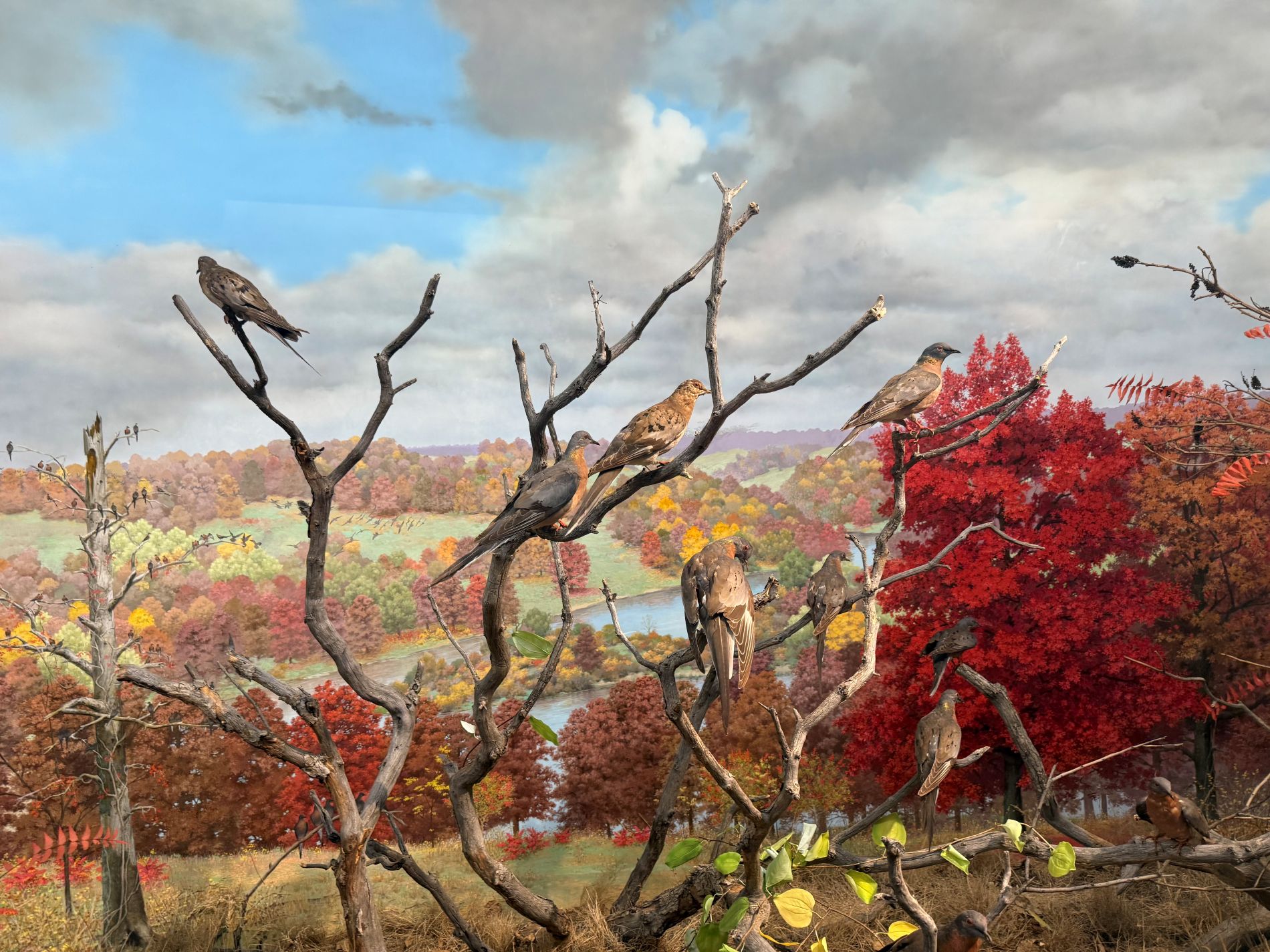
Preserved passenger pigeons, their specimens collected in the 1890s, set in an autumn scene set in Johnson County, Iowa in the Northern & Rare Birds exhibition on Level 3. (Photo/ Taran Volckhausen)
They were once the most common bird in the world. Numbering in the billions, massive flocks of passenger pigeons could block the sun for hours as they passed overhead. These birds filled North American skies from as far south as Texas and Florida all the way up into Canada. Tragically, passenger pigeons were driven to extinction by overhunting and habitat destruction.
Preserved passenger pigeons, their specimens collected in the 1890s, can be seen in an autumn scene set in Johnson County, Iowa in the Northern & Rare Birds exhibition on Level 3. It's a solemn reminder of what has been lost — and the importance of conservation efforts today.
Snow Geese: Travelers in White
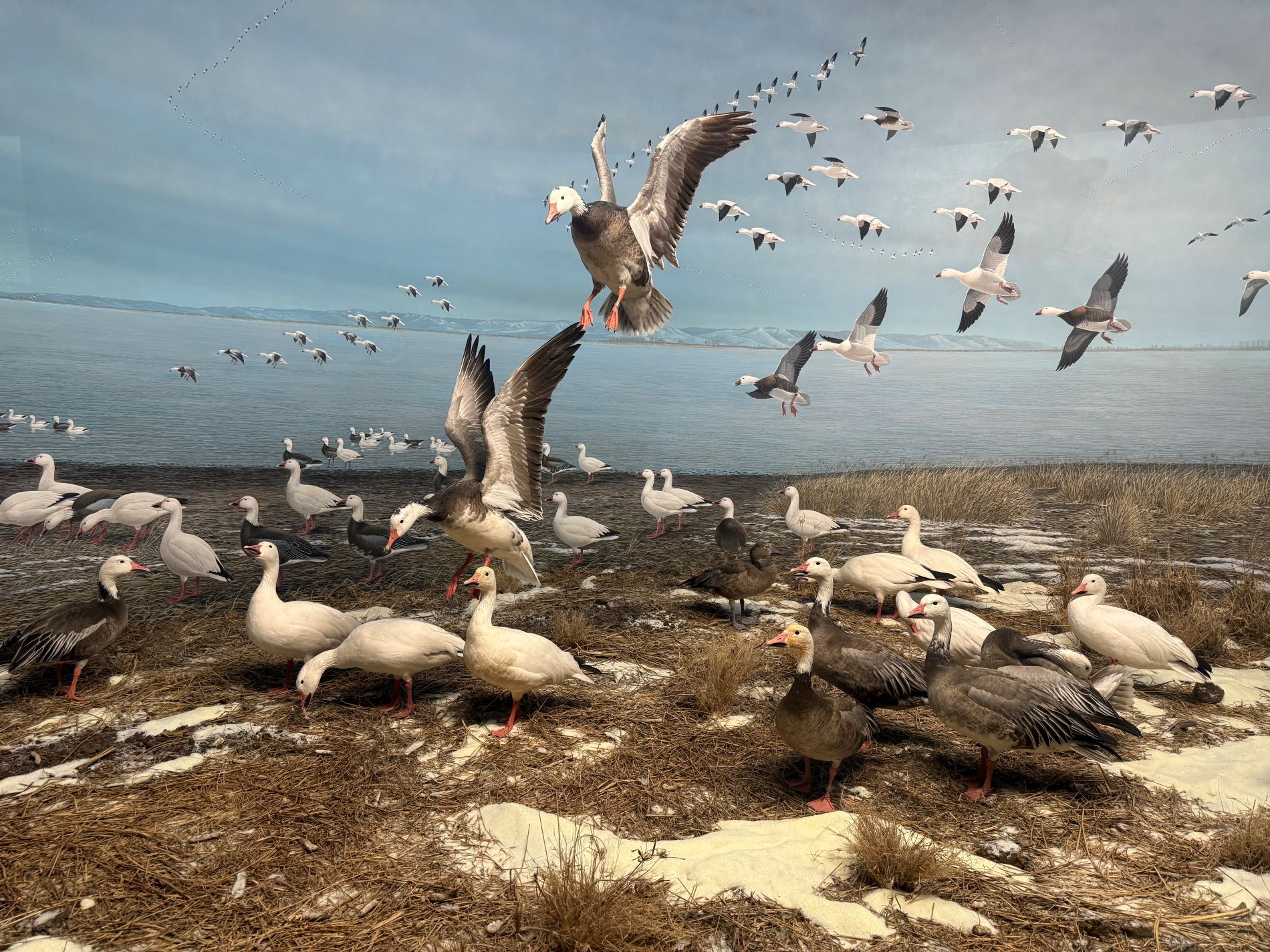
Snow geese in the Northern & Rare Birds exhibition on Level 3, depicted on their inland migration journey stopping over at the Loess Bluffs National Wildlife Refuge in Missouri. (Photo/ Taran Volckhausen)
Snow geese are long-distance migrants, known for their spectacular flocks that fill the skies during spring and fall. With white plumage and black wingtips, these birds breed in the Arctic tundra and winter in the Gulf coasts of the United States. Their honking calls and synchronized flying make them a dramatic sight — especially when tens of thousands take off at once.
Visit the Northern & Rare Birds exhibition on Level 3 to see snow geese depicted on their inland migration journey stopping over at the Loess Bluffs National Wildlife Refuge in Missouri. Their movement reflects the seasonal rhythms of the grasslands and wetlands they depend on.
Sandhill Cranes: Wayward Dancers
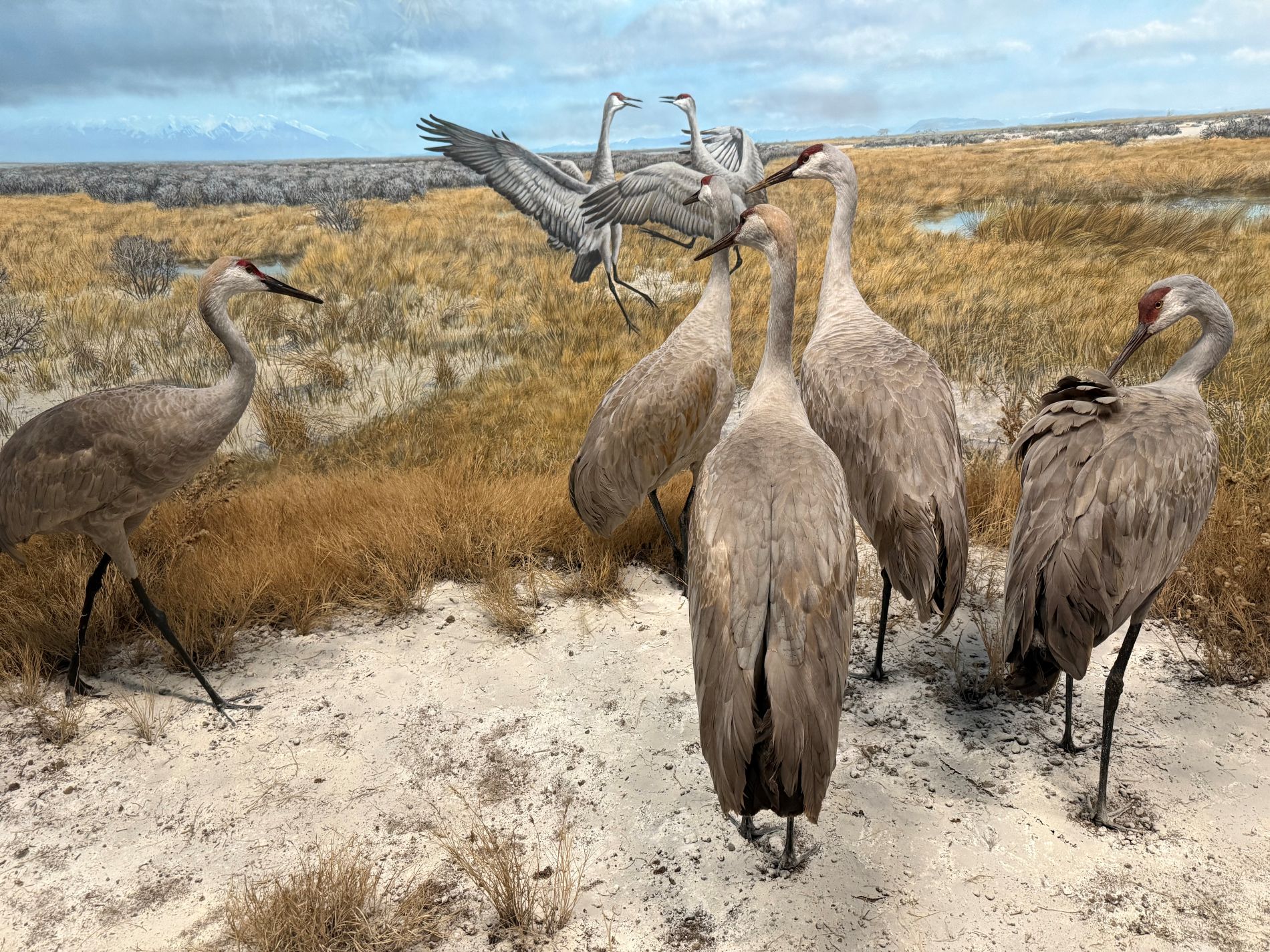
Sandhill cranes depicted in Colorado’s Monte Vista National Wildlife Refuge in Birds of the Americas exhibition on Level 3. (Photo/ Taran Volckhausen)
With their elegant silhouettes and bugling calls, sandhill cranes are among the oldest living bird species. During courtship, they perform elaborate dances — bowing, leaping and making loud croaking calls. These social birds breed in wetlands and open fields across North America and gather in huge flocks during migration, including thousands in the wetlands of the Monte Vista Wildlife Refuge in Colorado’s arid San Luis valley.
Sandhill cranes can be found in two separate dioramas at the Museum. In Northern & Rare Birds on the third floor, you can spot them on the Alaskan Tundra. From there, you can "migrate" across the Explore Colorado to the Birds of the Americas exhibition where you can see them depicted in Colorado’s Monte Vista National Wildlife Refuge.
Lark Buntings: Colorado's State Bird
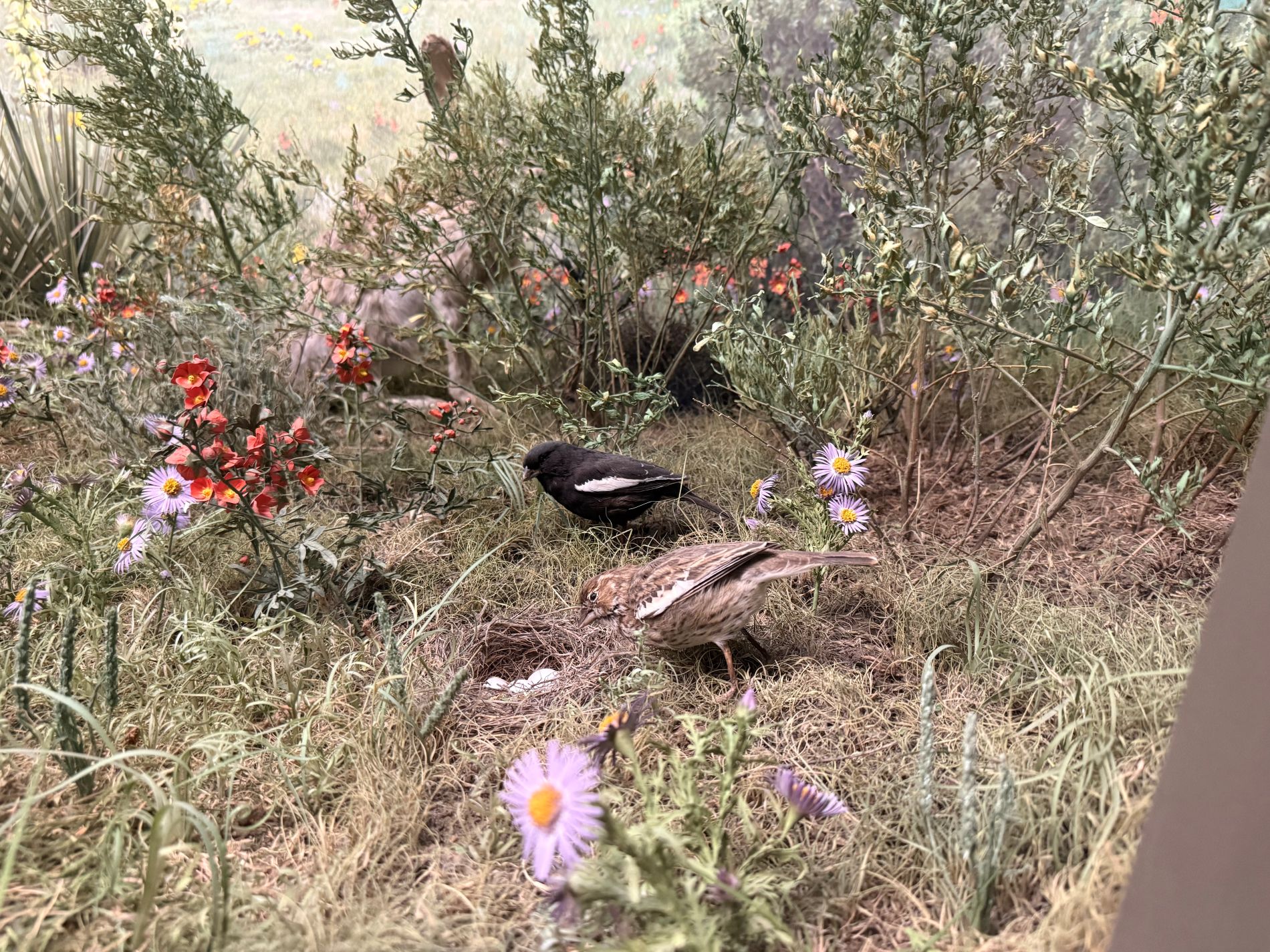
Male and female lark buntings depicted in a prairie grasslands diorama in the Explore Colorado exhibition on Level 3.
The lark bunting, Colorado's state bird, is a bird that you can see both in the Museum and perhaps nearby your home. After leaving the state in September for warmer locales to winter in Texas and Mexico, the lark bunting can now be spotted back in Colorado for spring mating season. The male larks have distinctive black bodies with white wings while the females have brown feathers with streaks. These modest-looking birds boast a showy mating ritual where male lark buntings try to impress potential mates by flying up 20 to 30 feet in the air and then spiraling down to the ground while making a distinct call.
At the Museum, you can see lark buntings guarding their ground nest in the Explore Colorado exhibition, which is part of the Wildlife Halls dioramas on Level 3. The diorama depicts the birds near a marsh in the grasslands of Pawnee Buttes, close to the Wyoming border, on a late spring day.



